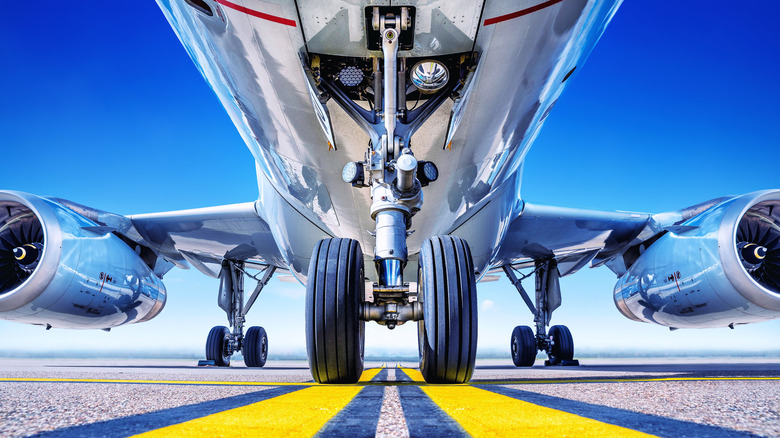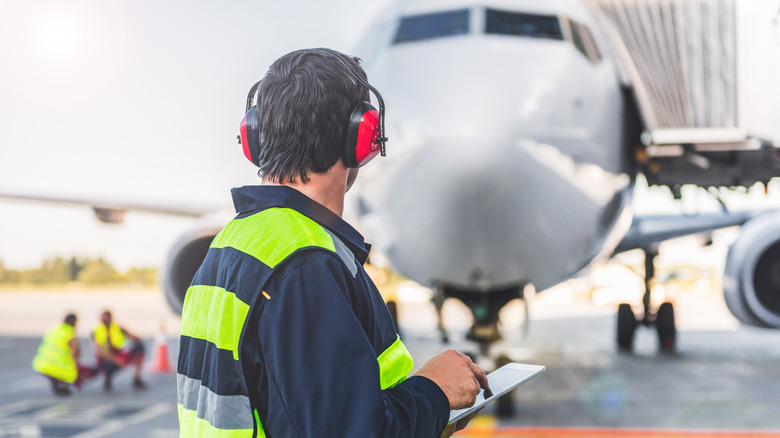Why Don't Airplane Tires Explode?
Hundreds of thousands of planes land every day, rolling down the tarmac at 170 miles per hour while carrying thousands of pounds of weight. Why don't airplane tires give under these extreme conditions? The answer isn't as white or black as many believe. Airplane tires have not always been safe. In 1987, the FAA mandated all airplanes stop using oxygen in their tires and replace it with nitrogen. The reason was "to eliminate the possibility of a chemical reaction between atmospheric oxygen and volatile gases from the tire inner liner producing a tire explosion," the FAA mandate reads. The basis for this new mandate was forged by airplane crashes like the crash of Continental Airlines flight 603.
Admiral Clouberg, an analyzer of plane crashes, details the fatal crash of Continental Airlines flight 603 on March 1, 1978. The airplane experienced a tire explosion during take-off from LA with about 200 people on board. The plane caught fire and safety exit malfunctions left 2 dead and dozens seriously injured. The investigation by the National Transportation Safety Board (NTSB) identified tire malfunctions and improper tire maintenance practices as the triggers of the fatal accident. Flight Air Canada 189, also in 1978, US Airways Flight 5050 in 1989, and Nigeria Airways Flight 2120 in 1991 are other notable fatal airplane accidents linked to tire safety. The airline industry learned the hard lessons on tire safety and evolved in response.
How technology, regulations, and maintenance keep airplanes tires safe
The reason why airplane tires do not explode is that their design and technology have reached peak safety levels. Sided by strong regulations and strict tire maintenance policies, the industry keeps the airborne sector safe. Eric Adams, veteran aerospace and military journalist, explains in an article on Wired that ordinary airplane tires don't need to be re-treaded until they've hit the ground 500 times. Additionally, each tire can be re-tread seven times if not damaged. Some planes like the Airbus A380 roll with 20 tires, while others, like the massive Antonov An-225 need 32 tires.
"The key to their remarkable durability is maximizing the air pressure," Lee Bartholomew, lead test engineer for Michelin Aircraft Tires, told Wired. Airplane tires are inflated at 200 psi, about six times more pressure than automobile tires. Another big stress for airplane tires is during taxiing when they support the massive weight of the craft without significant acceleration forces. During the first seconds of landing the tires of a plane do not roll but are actually dragged by the aircraft, hence the skidding sound everyone hears during landing.
The combination of extreme pressure and nitrogen inflation are the reasons why tires do not explode, burst, or disintegrate when landing. Even if a tire would burst, the nitrogen in the tire would prevent it from exploding. Goodyear, a leading tire manufacturer for commercial, military, and civilian aircraft, with more than 3 million landings tested in their facilities, explains that risks of explosions do exist. These include: tires exposed to extremely high temperatures, exceeded pressures of inflation, physical damage, foreign objects, cuts, and cracks on a tire. The FAA and other safety organizations recommend best practices for airplane tire safety to be met.

